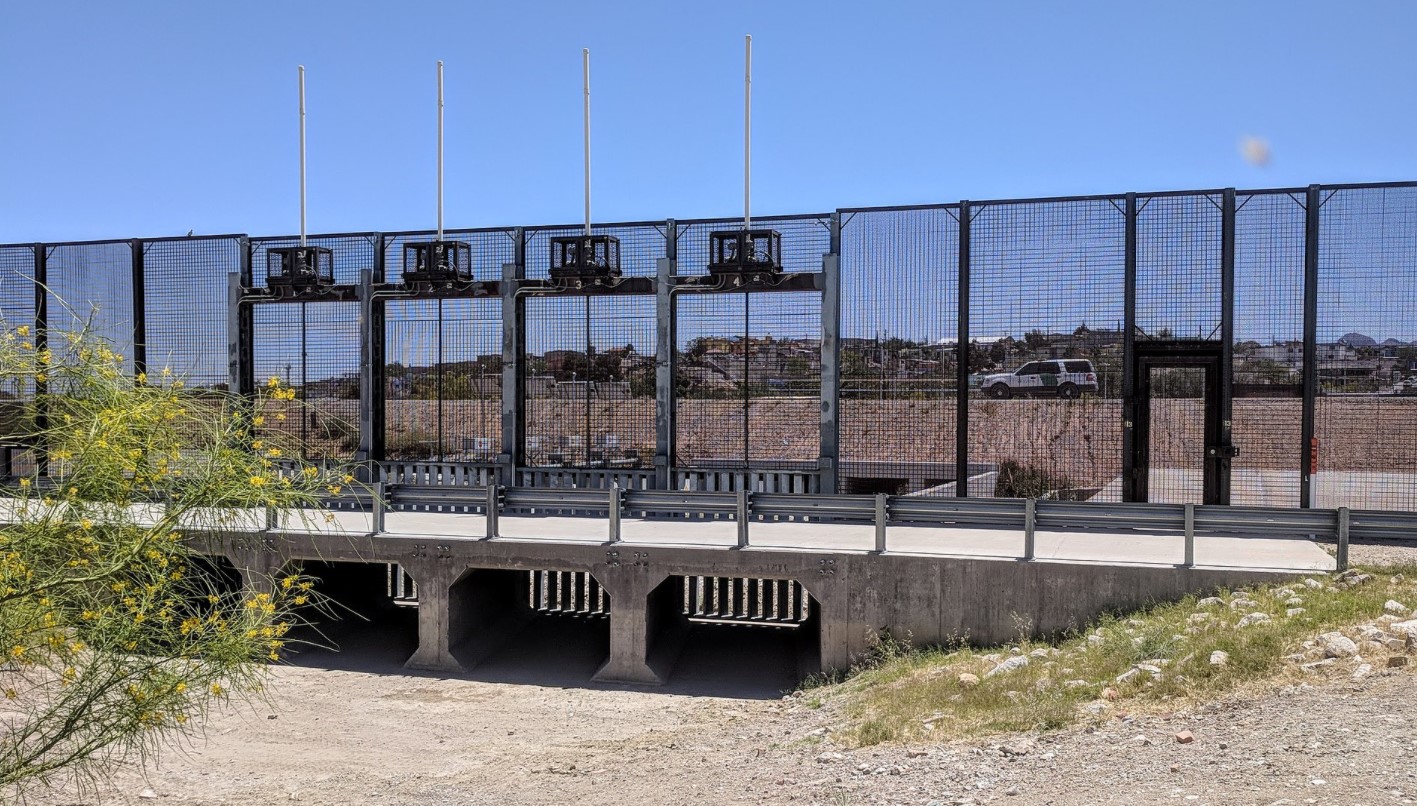 The border fence between El Paso and Juarez has an elaborate gate structure to allow floodwaters to pass under. The grates prevent people being able to cross under, and can be raised for floodwaters carrying debris. Beyond the fence is a canal and levee before the Rio Grande; the Border Patrol cars are parked on the levee. Wikipedia
The border fence between El Paso and Juarez has an elaborate gate structure to allow floodwaters to pass under. The grates prevent people being able to cross under, and can be raised for floodwaters carrying debris. Beyond the fence is a canal and levee before the Rio Grande; the Border Patrol cars are parked on the levee. Wikipedia
Across the world border walls are multiplying
The world has more border walls than ever, a report co-authored by three independent European research centres revealed. The current trend is even known as “the walling of the world”, according to Damien Simonneau, researcher at the Collège de France and author of the study.
Published: March 17, 2021, 2:57 pm
From six in 1989, we have grown to nearly 63 physical walls today, according to a November 2020 report, co-authored by the Dutch think-tank Transnational Institute, the Center Delàs d’Estudis per la Pau in Barcelona and the Dutch group Stop Wapenhandel.
The last two decades have seen a particularly prolific expansion in the erection of walls and other electrified fences. But while the Berlin Wall was intended to prevent residents of the Eastern Bloc from fleeing, these new walls serve to prevent migrants from entering.
“Walling and militarizing a border has become very common,” explained Damien Simonneau, researcher at the Collège de France and author of L’Obsession du mur. Since the attacks of September 11, 2001, the border has been associated with an idea of security and control, which was not the case before, he added.
The construction of walls therefore seems to be a business of the future. In 2009, the militarization of the border between Saudi Arabia and Iraq turned out to be a profitable contract for the Franco-German company EADS. In 2018, a report from the Transnational Institute estimated the international border security market at 17,5 billion euros and predicted growth of at least 8 percent in the years to come.
In February this year, the Dominican government announced the project to erect a new wall which extends for about 380km between Haiti and the Dominican Republic to end illegal migration. Not only will the new wall help curb illegal immigration, but also drugs and the flow of stolen vehicles between the two countries, which share the Caribbean island of Hispaniola.
Haiti, one of the poorest nations in the Western Hemisphere, is a headache for the Dominicans already struggling with a population of about 11 million. Thus some stretches of fencing have already been erected along the border. In “conflictive” sections the new barrier will include a double-fence with motion sensors, infrared systems and facial recognition cameras.
Erecting walls is therefore becoming a trend as almost 60 percent of the world’s population live in a country that has walled up its borders, most often to fight terrorism, smuggling or unauthorized immigration.
The European Union is no exception. Contrary to the image of openness conveyed by the free movement allowed by the Schengen agreements, some 1000 kilometers of walls have been built along its borders over the past twenty years, mainly to fight against unauthorized immigration.
“The erection of walls presents a strong state that controls its borders and its territory,” according to Simonneau. An example is the wall built in 2015 by Viktor Orbàn on the border between Hungary and Serbia which stretches 175 kilometers with its barbed wire of four meters high. Designed to “preserve the Christian roots” of Hungary against the migratory danger, it inspired Austria, Slovenia and Macedonia, to do the same at their borders. Bulgaria, too, has erected nearly 176 kilometers of barbed wire fence along its border with Turkey, the main land entry point for migrants to Europe.
However, according to Simonneau, “the erection of walls against immigration is more part of political shows than the issue of controlling mobility. Rather than reducing migration, the construction of a wall mainly involves shifting it”.
It is indeed complicated to estimate the real impact of these walls on unauthorized immigration. Deprived of land access routes, migrants now take to the sea to reach Europe, with the dramatic effects announced in news headlines.
In the United States, the closure of the border with Mexico has pushed South Americans to the desert areas of Arizona, making the migration route more dangerous and deadly, without necessarily putting an end to it. But the situation has since changed dramatically.
This week, tens of thousands of migrants, mostly from Central America, were heading for the Mexican border to try to enter the United States, one of the biggest challenges facing President Joe Biden since he encouraged the rush.
In a highly publicized series of day-one executive orders, the anti-wall Biden had overturned Trump-era immigration policies like the Migrant Protection Protocols. He attempted to institute a 100-day moratorium on deportations – a senseless move that was eventually struck down by courts. The new president even ordered a broad review of DHS and ICE practices, to reverse the measures instituted by the pro-wall President Trump.
Presidents are supposed to fix problems, not create them: In February alone, more than 100 000 illegal migrants were arrested at the Mexico-USA border, including more than 70 000 single adults, nearly 20 000 family members and 9 457 unaccompanied minors.
In Africa, the images of hundreds of migrants climbing the barbed wire in Ceuta and Melilla, the Spanish enclaves in the north of Morocco, have been reported due to the mass violence associated with it as well as the repetition. “Walls are short-term responses, placebos,” Simonneau argued. “They do not solve the political causes that lead to migration, terrorism or smuggling, but simply push them back.”
In March 2020, Greek police officers shot migrants crossing the border with Turkey. The act was all the more notable on an ordinarily quiet border, where it is not customary to shoot. This is because of the heightened tension between European nations and the Turkish leader, President Erdogan. Turkish authorities had bused thousands of migrants to the border. According to AP, tens of thousands did attempt the crossing, although many were stopped by Greek forces and the natural river barrier. Apart from the migration issue, the two countries are also at loggerheads over energy rights in the Mediterranean.
And new wall is being built which will extend the existing barrier by about 26 kilometers to strenghten an existing 10 kilometer section of fence, reported the Associated Press. The project involves four Greek construction companies, and has been estimated to cost about €63 million when completed in April 2021.
Walls which were built in areas of conflict, were erected to limit mobility and separate the belligerents, but today, most of them testify to the “stagnation” of the situation, according to Simonneau. In both Cyprus and Belfast, in Northern Ireland, they survived the armed conflict, which ended decades ago, but mark, according to the researcher, the “freezing of tensions and the absence of a diplomatic process”. However, they effectively allow for a more lasting solution between the two parties.
Ditto for the demilitarized border which has separated South Korea from North Korea since 1953, or for the 2 700 km fortified sand wall between Morocco and the areas controlled by the Sahrawi Arab Democratic Republic, proclaimed in 1976 by the Front Polisario. Thus walls in conflict zones bear witness to the unfinished nature of a conquest, blocked for military or diplomatic reasons.
In Georgia, Russia and the de facto authorities have since the end of the 2008 conflict established a physical border between the separatist territories of Abkhazia and South Ossetia and the rest of the country. The construction of barbed wire fences has secured a cease fire zone, while maintaining a Russian presence on the territory to dissuade an adventurous NATO.
While the wall erected in 2002 by Israel along the “green line” in the West Bank was originally designed to combat terrorist attacks in the context of the Second Intifada, it now has a different function, according to the researcher. “The wall was thought out by certain Israeli actors as a policy of annexation of parts of the occupied West Bank,” he asserted, “and as a means of control of the Palestinian populations, on whom it prolongs the grip of the Israeli state.”
Condemned since 2004 by the International Court of Justice, 85 percent of the nine-meter-high concrete wall in fact runs along the West Bank and isolates almost 10 percent of the Palestinian Territory. Still under construction, the structure should eventually reach 712 kilometers in length.
All rights reserved. You have permission to quote freely from the articles provided that the source (www.freewestmedia.com) is given. Photos may not be used without our consent.
Consider donating to support our work
Help us to produce more articles like this. FreeWestMedia is depending on donations from our readers to keep going. With your help, we expose the mainstream fake news agenda.
Keep your language polite. Readers from many different countries visit and contribute to Free West Media and we must therefore obey the rules in, for example, Germany. Illegal content will be deleted.
If you have been approved to post comments without preview from FWM, you are responsible for violations of any law. This means that FWM may be forced to cooperate with authorities in a possible crime investigation.
If your comments are subject to preview by FWM, please be patient. We continually review comments but depending on the time of day it can take up to several hours before your comment is reviewed.
We reserve the right to delete comments that are offensive, contain slander or foul language, or are irrelevant to the discussion.
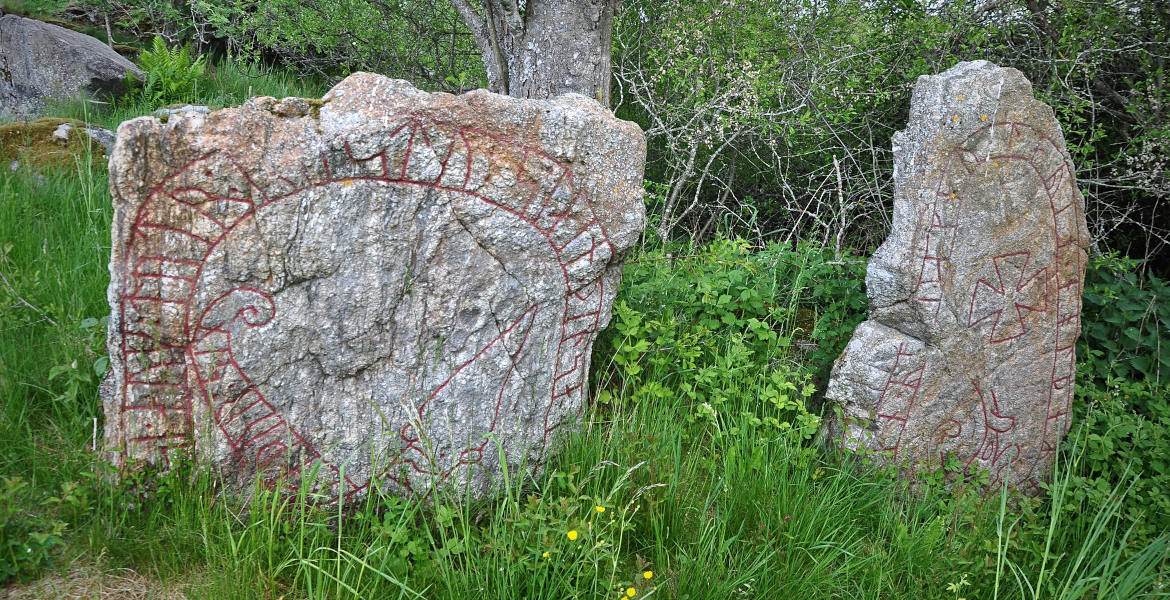
New App Helps Locate Sweden’s Historic Runestones
A new app called Swedish Runestones will help locate historical gems.
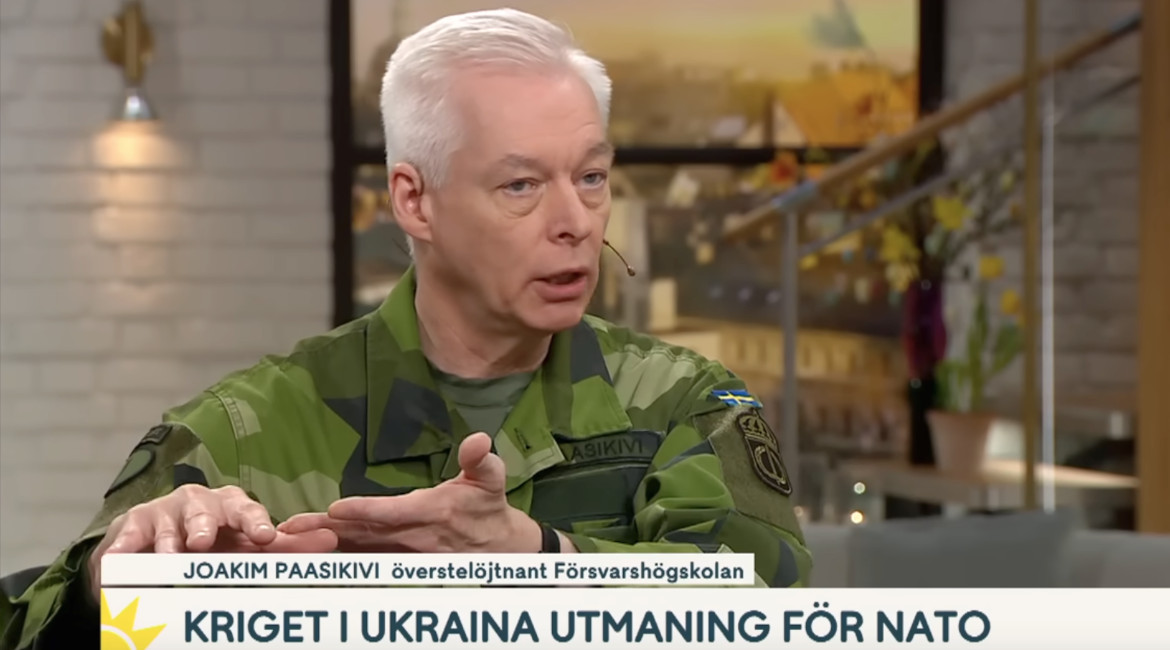
Swedish military wants to remilitarize the Åland Islands
The demilitarized autonomy has previously been known as 'the islands of peace.

NOAA Predicts Zero Sunspots for Almost the Whole 2030s
CLIMATEThe United States' government scientific organization, the National Oceanic and Atmospheric Administration (NOAA), predicts zero sunspots from 2031 to 2040. This is an extreme situation that has not occurred in as long as humanity has been counting sunspots, and it leads us into uncharted territory in terms of our solar system. However, this prediction aligns with the warnings of the world-renowned solar researcher Valentina Zharkova for many years, who indicated in 2019 various signs of this catastrophic phenomenon, including the extreme hailstorms we have seen in Europe and the world this summer. The forecast and various observations this year give cause for very significant concern. In this unique analysis, Free West Media explains why.
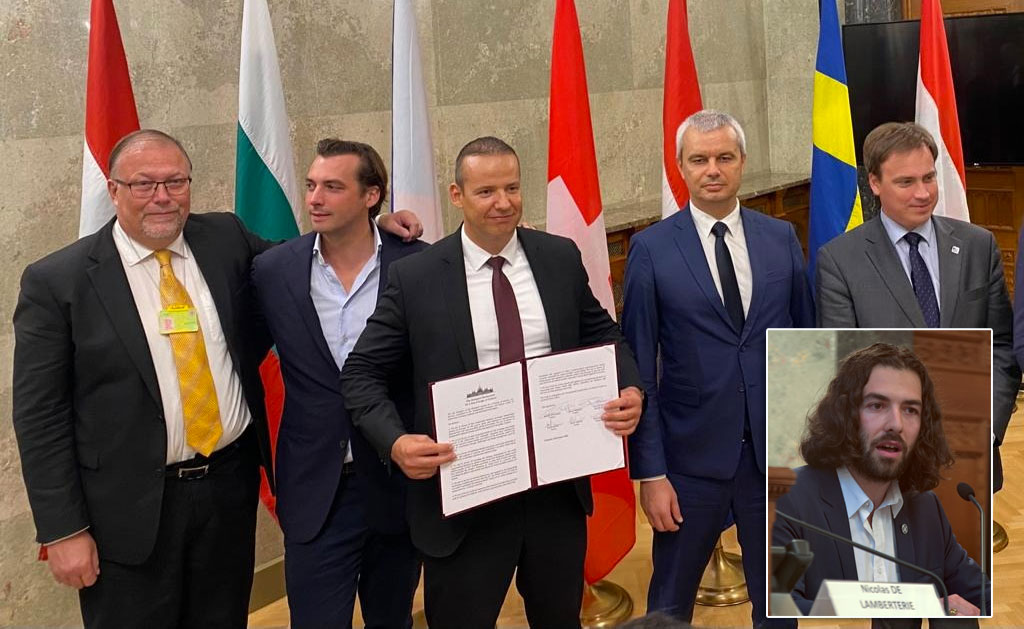
European Nationalist Parties Forge Cooperation Ahead of EU Elections
EUROPEAN ELECTIONSOn Saturday, August 26, representatives of six European nationalist parties gathered in Budapest. The meeting was initiated by the Hungarian party Mi Hazánk and took place in the national parliament. Representatives of the parties signed a joint declaration that not only reaffirms the parties' friendship but also their unity on a range of complex political issues. A surprisingly clear and radical manifesto was established. The hope is that this cooperation will lead to success in the EU elections and eventually result in the formation of a group in the European Parliament. For Swedish nationalism, this meeting marks a success as Sweden, for the first time, has a party represented in a leading nationalist cooperation in Europe. Free West Media was present at this historic event.

Turkey Believes Sweden Hasn’t Done Enough
Sweden will have to wait a bit longer for NATO membership, according to Turkey's Justice Minister Jilmaz Tunc. First, Sweden must extradite the "terrorists" Turkey wants and stop the desecration of the Quran.
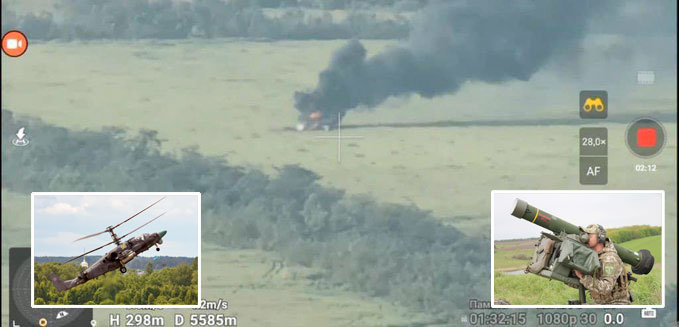
Swedish Weapon Takes Down Russia’s Best Attack Helicopter
The Russian attack helicopter Ka-52 is considered one of the world's best and has struck fear in Ukraine, where it has hunted down tanks and other armored vehicles, often beyond the range of many light anti-aircraft systems. However, it has met its match in the Swedish air defense missile system RBS 70, which has quickly led to significant losses for the Russian helicopter forces.
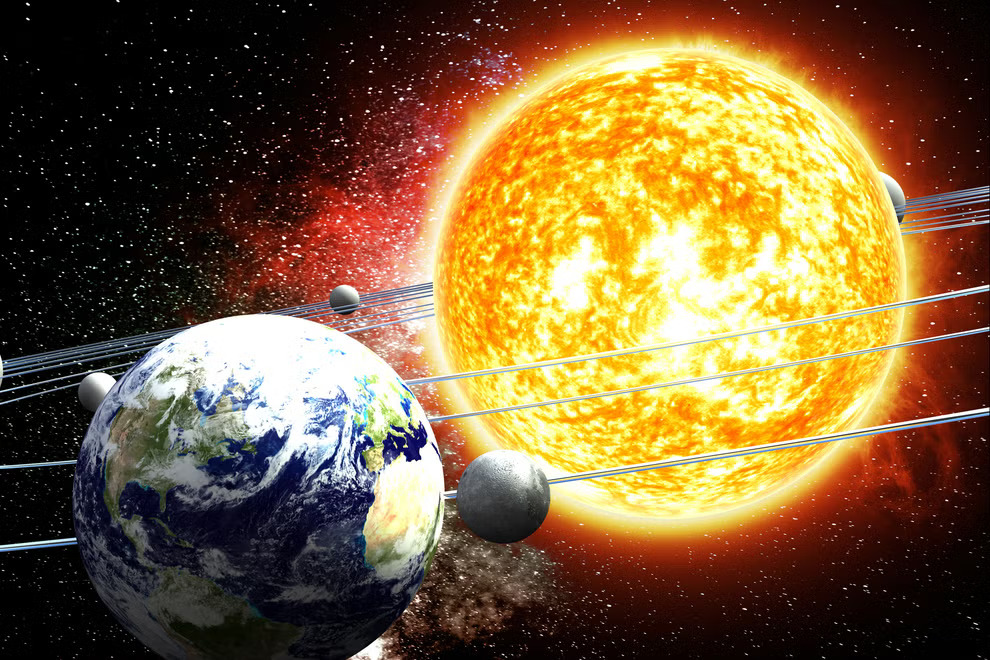
The Sun Drives Earth’s Climate, Not Carbon Dioxide
Top Researchers Push Back Against Climate Lies."The correlation is as clear as day," explained the Israeli astrophysicist Nir Shaviv, who was hailed by the establishment, before his interview with Forbes was hastily deleted. What he says contradicts the climate narrative, which points to humans as responsible for Earth's climate. Shaviv firmly asserts that it is the sun that controls the climate, something that can be scientifically proven in many ways. Contrary to the popular belief, the sun's influence on Earth has, in recent years, caused unusually cold and rainy weather, a trend that solar researchers warn will worsen significantly in the coming decades. The sun has exhibited an unusually low activity since 2016, during Solar Cycle 24, which was the weakest in a century.
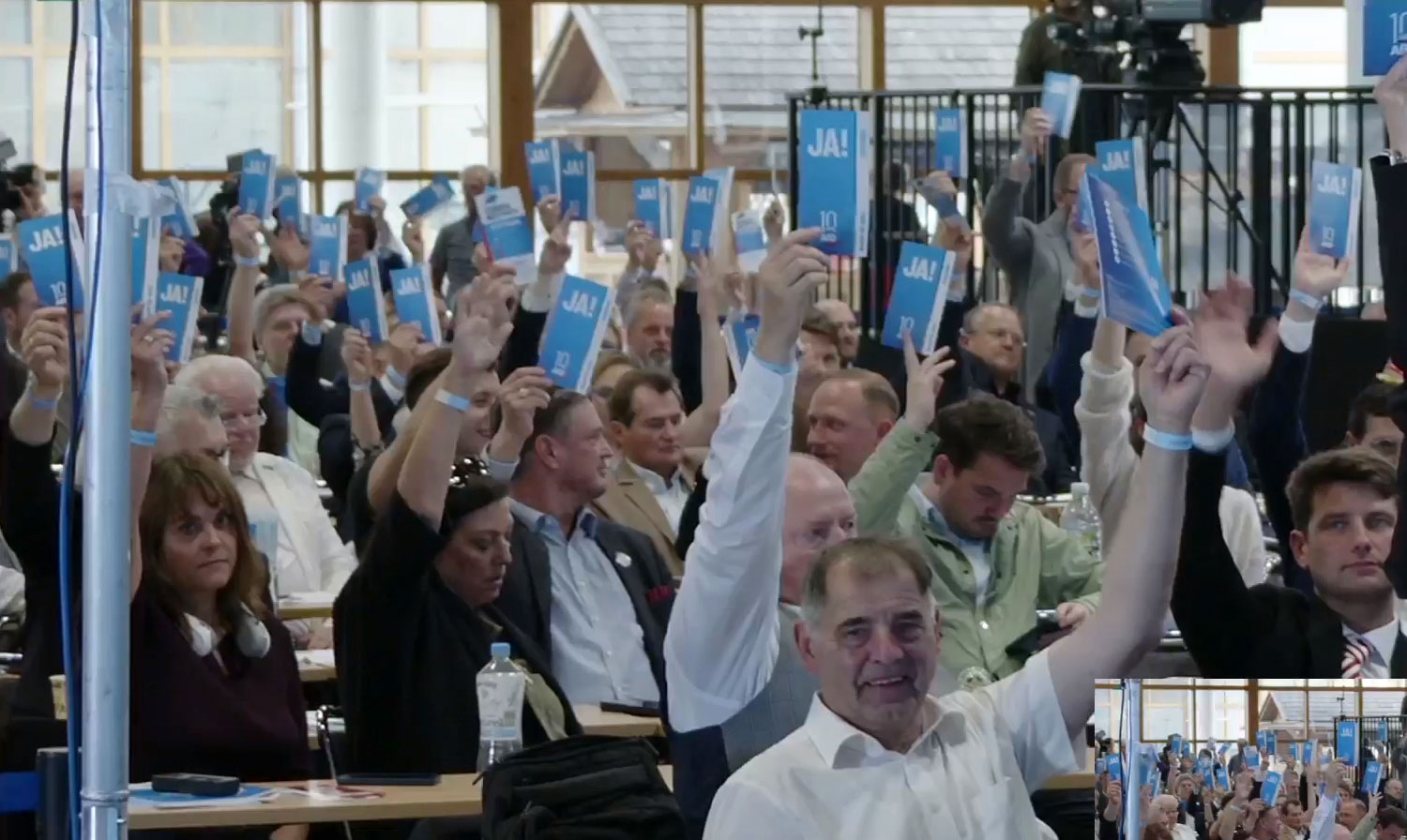
Strong Confidence in German AfD
Alternative for Germany (AfD) held a party conference on July 29-30 to select candidates for the upcoming EU election next year. EU Parliament member Maximilian Krah, belonging to the party's more radical, ethnonationalist faction, was appointed as the top candidate. The party's two spokespersons delivered powerful speeches criticizing the EU's failed migration policy and trade sanctions that isolate Europe and Germany from the rest of the world. They argued that it's time for the EU to return a significant portion of its power to national parliaments. However, they have dropped the demand for Germany to exit the EU.
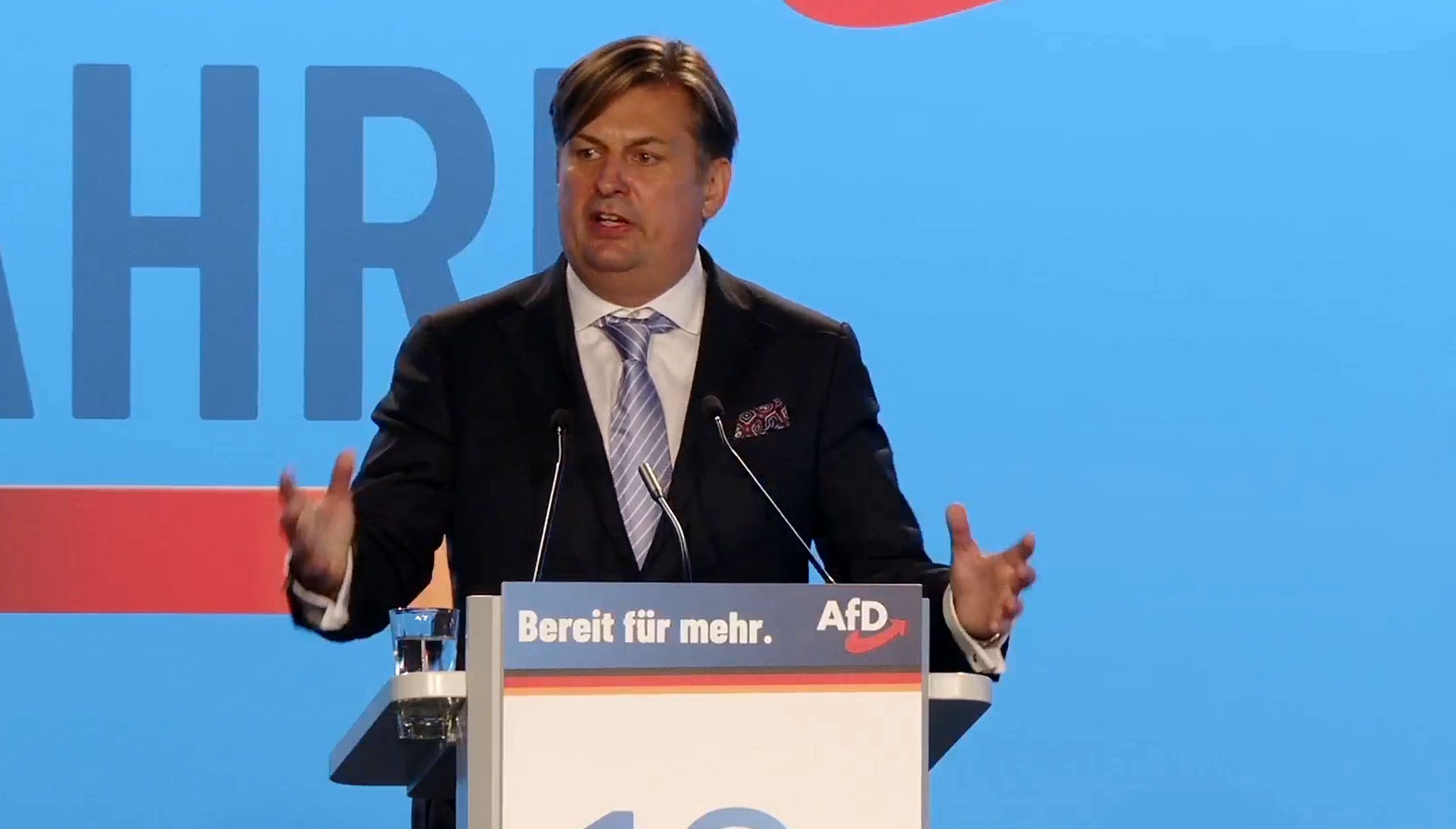
The Establishment Wants to Ban Germany’s Second Largest Party – for the Sake of Democracy
The rising popularity of AfD has raised strong concerns within the establishment. Despite lies and demonization in the media and isolation from the overall political establishment, the party continues to grow. Certain representatives of the party are accused of becoming increasingly "extreme," and in an unusual move, the influential weekly newspaper Der Spiegel demanded that AfD be "banned."

Dutch FvD break through the media blockade
What is happening in the Netherlands? It is often difficult to follow events in other countries, especially when distorted by system media. We give Forum for Democracy (FvD) the opportunity to speak out on the political situation in the Netherlands and the staunch resistance they face in trying to save the country.


No comments.
By submitting a comment you grant Free West Media a perpetual license to reproduce your words and name/web site in attribution. Inappropriate and irrelevant comments will be removed at an admin’s discretion. Your email is used for verification purposes only, it will never be shared.